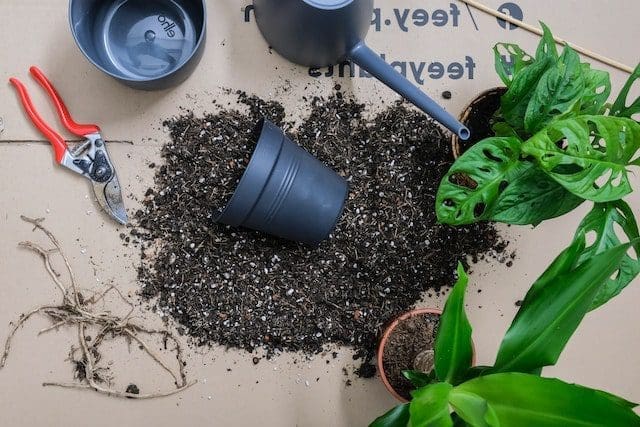Creating a beautiful garden that requires minimal effort to maintain can be a dream come true for many homeowners. A low-maintenance garden not only saves time and energy but also ensures that your outdoor space remains stunning throughout the year. By employing smart design choices and selecting the right plants, you can achieve a garden that is both easy to care for and visually appealing. In this article, we will explore three key principles for designing low-maintenance gardens: strategic plant selection, efficient use of hardscape, and smart watering systems.
Strategic Plant Selection: Choosing the Right Plants
One of the fundamental aspects of designing a low-maintenance garden is selecting plants that are well-suited to your climate and require minimal care. Native plants are an excellent choice as they are adapted to the local conditions and tend to be more resistant to pests and diseases. Additionally, they often have lower water requirements, making them ideal for conserving resources.
Consider incorporating a mix of evergreen and perennial plants from Plantiago into your garden. Evergreens provide year-round foliage and structure, while perennials offer bursts of color and interest throughout the seasons. Opt for varieties that are known for their hardiness and ability to thrive with minimal intervention. Examples include lavender, sedum, ornamental grasses, and coneflowers. These plants not only require less maintenance but also attract beneficial insects and pollinators, creating a vibrant ecosystem within your garden.
Efficient Use of Hardscape: Minimizing Maintenance Tasks
Integrating hardscape elements into your garden design can significantly reduce the amount of time and effort required for maintenance. Consider incorporating features such as pathways, gravel beds, and mulched areas from H Potter’s shop or any other store specialized in this field. These elements not only add visual interest but also serve functional purposes by preventing weed growth and reducing the need for frequent watering. Moreover, to ensure the edges of your garden remain neat and tidy, weed eaters can be a gardener’s best friend, trimming grass and weeds around pathways and mulched areas with precision and ease.
When designing your hardscape, choose materials that are durable and require minimal upkeep. Natural stone or concrete pavers are excellent options as they are long-lasting and low-maintenance. Additionally, incorporating raised beds or containers can make gardening more accessible while reducing the need for bending or kneeling. By creating well-defined spaces with hardscape elements, you can minimize the spread of weeds and create a more structured and organized garden.
Smart Watering Systems: Efficient Irrigation Solutions
Watering is often one of the most time-consuming tasks in garden maintenance. Implementing a smart watering system can help streamline this process and ensure that your plants receive the right amount of water without waste. Drip irrigation systems are particularly effective as they deliver water directly to the plant’s roots, reducing evaporation and preventing weed growth.
Consider installing a timer or moisture sensor to automate your watering schedule. This way, you can adjust the frequency and duration of irrigation based on weather conditions and plant needs. Rainwater harvesting systems can also be integrated into your garden to collect and reuse rainwater, further reducing your reliance on traditional water sources.
Mulching: A Time-Saving and Beneficial Practice
Mulching is a simple yet effective practice that can significantly reduce maintenance tasks in your garden. Applying a layer of organic mulch, such as wood chips, straw, or compost, around your plants offers multiple benefits. Firstly, it helps retain soil moisture by reducing evaporation, meaning you’ll spend less time watering. Secondly, mulch acts as a natural weed barrier, suppressing the growth of unwanted plants and reducing the need for frequent weeding. Lastly, as the mulch breaks down over time, it enriches the soil with nutrients, improving overall plant health. By mulching your garden beds, you’ll not only save time but also promote the long-term vitality of your plants.

Designing for Easy Access and Maintenance
Consider ease of access and maintenance. By creating pathways and clear, defined spaces, you can navigate your garden easily and perform maintenance tasks efficiently. Use materials like gravel, stepping stones, or flagstone to construct pathways that lead to different areas of your garden. These pathways not only provide practicality but also add visual appeal to your outdoor space. Additionally, leave enough space between plants and garden features to allow for easy maneuvering and access. Proper planning and thoughtful design will ensure that your garden remains accessible and manageable, even with minimal effort.
Incorporating Automated Lighting and Security Systems
In addition to the plant-related aspects, integrating automated lighting and security systems into your garden design can enhance both its aesthetics and functionality. Low-maintenance gardens can benefit from well-placed outdoor lighting, which not only extends the usability of your outdoor space but also adds a magical ambiance. Consider using energy-efficient LED lights with timers or motion sensors to minimize energy consumption and eliminate the need for manual operation.
Furthermore, installing security systems such as motion-activated cameras and alarms can provide peace of mind, deterring unwanted pests and protecting your garden investment. By incorporating these automated systems, you can enjoy a beautiful and secure garden with minimal effort and maintenance.
By employing these additional strategies in your low-maintenance garden design, you can further optimize your outdoor space for easy care and year-round beauty. Mulching provides multiple benefits, including moisture retention and weed suppression. Designing with easy access and maintenance in mind ensures that you can navigate and maintain your garden effortlessly.
Finally, incorporating automated lighting and security systems adds both functionality and aesthetics to your outdoor space. With careful planning and implementation of these strategies, you can create a garden that requires minimal maintenance while still providing a visually stunning and enjoyable retreat.





























